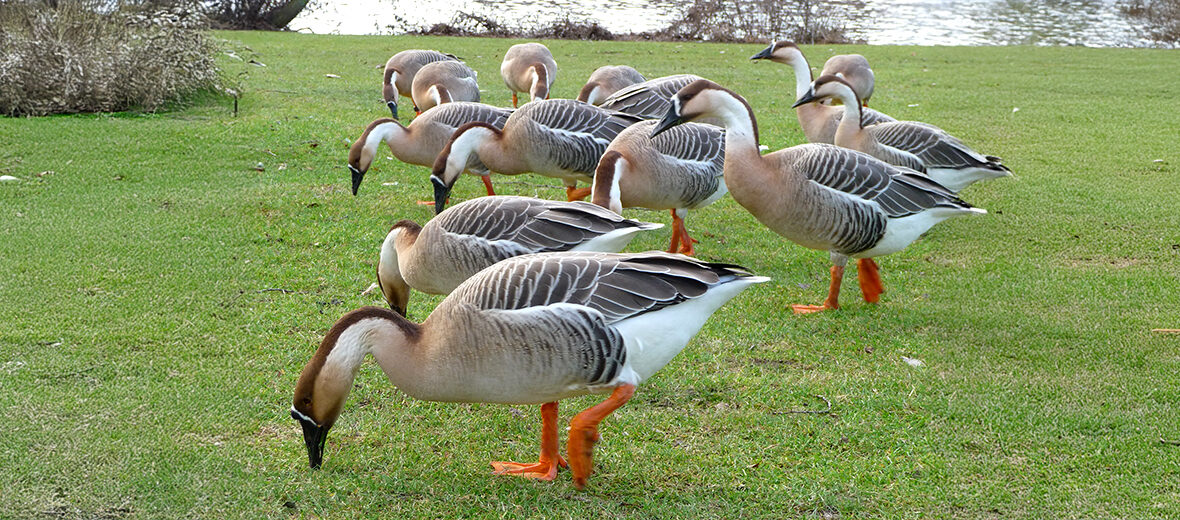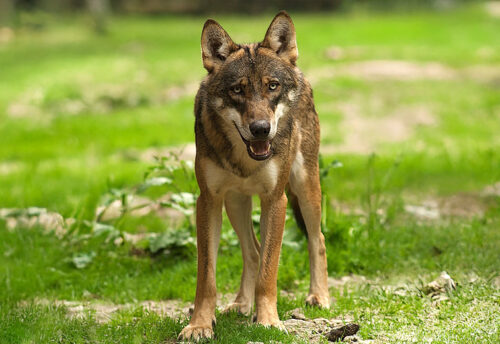
Which is it, a swan or a goose? Is it both? It’s the swan goose, a large species of migratory goose that hails from Northeast China, Mongolia, and the Russian Far East. Vagrant populations are sometimes encountered in Japan and Korea (where they used to winter in large numbers when they were more common), and even more rarely in Kazakhstan, Laos, coastal Siberia, Taiwan, Thailand, and Uzbekistan. These geese face the threats of habitat loss and destruction at the hands of commercial and industrial developments, farming, ranching, freshwater & marine aquaculture, mining, quarrying, dams, fires, and fire suppression; hunting; trapping; human interference via recreational and work activities; invasive species, that can bring about disease; land pollution; water pollution; & air pollution; as well as climate change, that can bring about habitat alteration and droughts. The IUCN lists these birds as Endangered. Their population trend is listed as decreasing.
First the Stats…
Scientific name: Anser cygnoides
Weight: Up to 7.7 lbs.
Length: Up to 37 inches
Wingspan: Up to 73 inches
Lifespan: Up to 20 years
Now on to the Facts!
1.) There were only an estimated 43,500 wild individuals remaining, as of 2023.
2.) These geese have been extensively domesticated and are referred to by the name Chinese goose.
3.) They were first described by the Swedish naturalist Carl Linnaeus in 1758 in the 10th edition of his Systema Naturae, and listed under the binomial name Anas cygnoid.
4.) These birds are 1 of 11 species placed in the genus Anser which was described by the French zoologist Mathurin Jacques Brisson in 1760.
5.) The specific epithet joins the Latin “cygnus” which translates to “swan” with the Ancient Greek -oidēs which translates to “resembling”. This species is monotypic, meaning there are no subspecies recognized.
But wait, there’s more on the swan goose!
6.) Their call is a loud, drawn-out, and ascending honking “aang”. They also have a warning call, which is a similar but more barking honk that is given 2 – 3 times in short successions.
7.) They prefer steppe, taiga, and mountain valley habitats close to freshwater.
Did you know…?
Though the vast majority of domestic geese have descended from the greylag goose, 2 breeds are direct descendants of the swan goose. Those being the Chinese goose and the African goose.
8.) Sedges, grasses, and water plants are all on the menu.
9.) Females lay up to 8 eggs that hatch in up to 28 days.
10.) Swan geese were uplisted from Near Threatened to Vulnerable on the IUCN Red List in 1992. Then further to Endangered in 2000, as their population is continually declining due to habitat loss and excessive hunting and egg collecting.
But wait, there’s still more on the swan goose!
11.) These geese have been domesticated since at least the mid-18th century. It is also believed that they have even been domesticated in China since around 1000 BC.
12.) Charles Darwin noted, “The hybrids from the common and Chinese geese, species which are so different that they are generally ranked in distinct genera, have often bred in this country with either pure parent, and in 1 single instance they have bred inter se (between or among themselves).”
13.) Natural predators of these geese are coyotes, foxes, dogs, raccoons, rats, and snakes.
14.) These birds are crepuscular (active at dawn and dusk).
Now a Short Swan Goose Video!
Be sure to share & comment below! Also, check out the Critter Science YouTube channel. Videos added regularly!

Want to suggest a critter for me to write about? Let me know here.
Some source material acquired from: Wikipedia & IUCN
Photo credit: 4028mdk09



